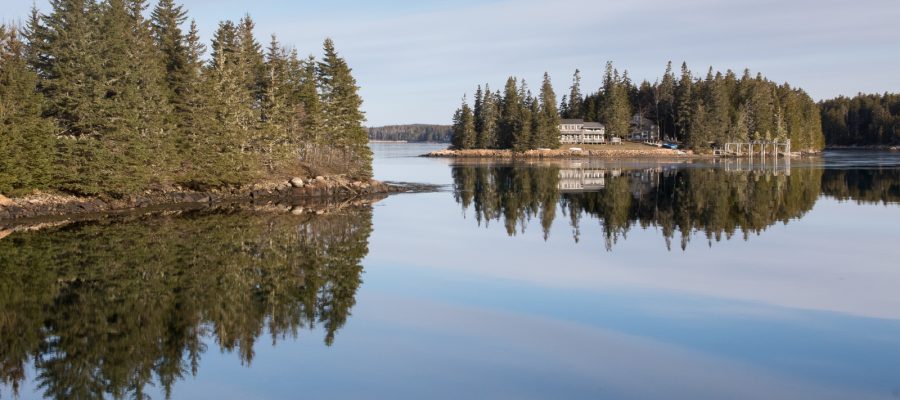A few days ago*, I visited Walden Pond in Concord, Massachusetts. When I arrived, the wind was bitingly cold, and the lake shore was obscured by thick flurries of snowflakes. I was there to see the place where Henry David Thoreau, renowned writer and naturalist, had spent two years, two months, and two days living in a tiny cabin in the woods. Thoreau recounted his experiences by the lake in his book “Walden,” which is full of his observations of nature. It was his book that inspired me to take up nature journaling.
I started keeping a nature journal almost ten years ago when I visited Badlands National Park, South Dakota, USA. As I explored the park, I saw so much that could not be captured with my camera. The way the light rippled across the mountains enchanted me, as did the sound of the meadowlarks singing and the crunch of deep snow under my boots. To record these details, I began carrying a notebook in the field and jotting down my reflections. Sometimes I would even sketch the outline of an animal track or the profile of a flower. Today, I treasure these journals because they add texture to my memories and my photographs.
In addition to keeping my own journals, I’ve found that nature journaling is a wonderful tool for classrooms because it gives students a way to process their experiences and to reflect on what they’ve learned and observed. Taking time to reflect on experiences has also been shown to encourage deeper learning. To keep a journal, students do not have to use pen and paper like Thoreau. Instead, modern nature journaling can take many forms, from blogging to Instagramming. The key point is to provide a place where students can document their observations and their thoughts about nature. The process of journaling can help them improve their writing, while also refining skills relevant to science, technology, engineering, and math (STEM), including observation, classification, and communication.
As I write this, I’m actually in the midst of journaling about another nature experience, this time in Acadia National Park in Maine, USA. I’m here as an Artist in Residence for the park and am using my journal and my camera to document the change in seasons. Here in the park, the snow is starting to melt, and the first signs of spring are appearing. Just yesterday, I hiked along the sea cliffs on the Schoodic Peninsula in the park. The entry in my journal is short, but captures aspects of the experience that my photos miss:
“The waves were big today and I had to leap back as they crashed on to the shore. Out at Schoodic Point, I saw five harlequin ducks huddled on the rocks and watched a pair of bufflehead ducks bobbing up and down in the sea. I can’t help but wonder how these birds stay alive and warm atop the frigid water. The giant sheets of ice I found last week have melted and left large puddles behind. Is this the beginning of spring?”

For me, nature journaling has offered an opportunity for personal growth and reflection. For educators, nature journaling is an opportunity to connect students with the natural world. Here are a few ways that you can incorporate nature journaling activities into your teaching, even if you do not have the opportunity to take students out into a national park or wild place:
Classroom Activities:
-Take your students on an outdoor walk around your school or in a local park. Plan three to four breaks during the walk for students to write in their journals and prepare prompts for each break to focus their attention. For example, you could ask students to describe the weather during the first break, to write about an interesting thing that they observed during the second break, and to write a nature poem or haiku during the third break. Ask for volunteers to share their journal entries with the class.
– If you cannot go outside with your students, bring a collection of items from nature into your classroom. You could gather up leaves, pressed flowers, pieces of bark, nuts, feathers, and rocks. Ask students to pick an object from the pile to draw in the journal. Then ask them to answer the following questions about the object in their journal: What does the object look like? What does the object feel like? Does it have any unique characteristics? What is the object?
Let Gabby know how nature journaling went in your classroom in the comments section below!
For more tips on using journals in your ELT classroom, check out Katherine Bilsborough’s recent In Focus blog post Learning Journals for Young Learners: What, Why and How?
*Gabby wrote this blog post while on a trip to Acadia National Park in April, 2018.
Author: Gabby Salazar
Photographer and conservationist Gabby Salazar travels around the globe to document rare and endangered species and to raise awareness about their plight. She is a National Geographic Young Explorer, a former President of the North American Nature Photography Association, a U.S. Fulbright Scholar in Photography, and a member of the Emerging League of the International League of Conservation Photographers (iLCP). At 19, she founded a student magazine with Nature’s Best Photography to promote photography as a way to connect kids with nature. She continues to teach photography to children and teenagers around the world.
For more National Geographic Learning content from Gabby, you can watch her webinar recording: Inspiring Environmental Responsibility in the Young Learner Classroom here: NGL.Cengage.com/YLwebinars .


